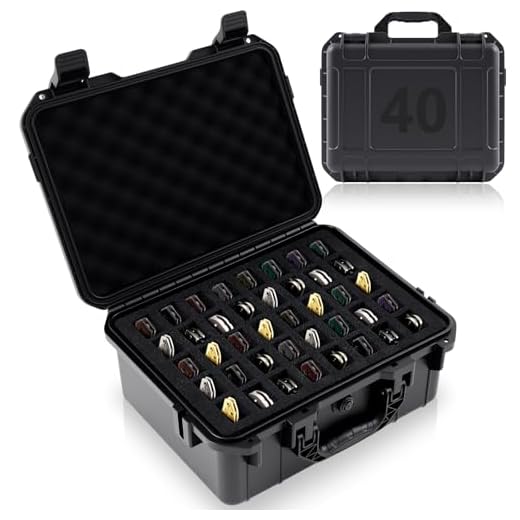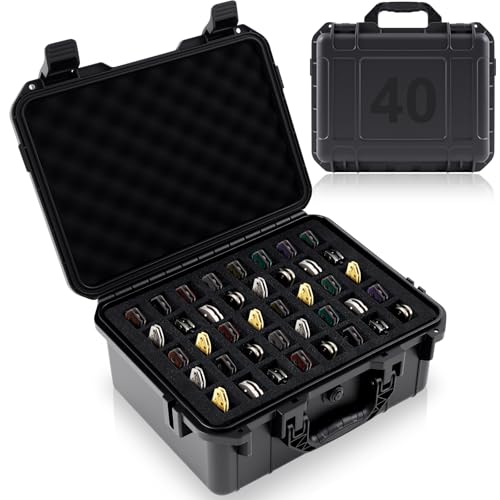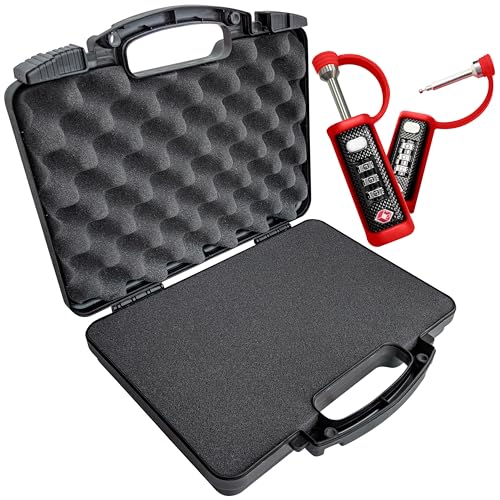



Immediate recommendation: Transport utility knives only in the aircraft cargo hold. U.S. Transportation Security Administration guidance classifies razor-type utility tools as prohibited in cabin baggage; screening personnel will confiscate such items from carry-on. Most major regulators allow these tools when secured inside hold baggage, but arrival and carrier rules differ.
Packing requirements: Retract blades and lock mechanisms when available, fully sheath any exposed cutting edges, secure with heavy-duty tape across the blade and sheath, and place the tool inside a rigid, lockable case (metal or hard plastic). Pad the case with soft items to prevent movement and isolate the tool from other contents.
Preflight checks: Verify the airline’s prohibited item list and the civil aviation authority rules at both departure and destination. Regional carriers and some international jurisdictions prohibit certain sharp tools in the hold; if regulation is unclear, arrange shipment via a freight or courier service or leave the tool behind.
Security consequences and handling: Discovery of a utility knife in cabin baggage typically leads to immediate confiscation, additional screening and possible denial of boarding; in the hold, baggage screeners may open the container for inspection. Labeling the container and using tamper-evident seals reduces handling risk for staff and lowers the chance of damage to other items.
TSA rules for utility knives in aircraft hold
Store utility knives exclusively in the aircraft hold; cabin carry-ons will be rejected during screening.
TSA permits most cutting tools in the aircraft hold regardless of blade length when secured so they cannot cause injury during handling. All blades and sharp tools (including retractable utility blades and hard-edged razors) are prohibited from carry-on compartments.
Packing recommendations: sheath or cover the blade with a commercial holster or heavy-duty tape; place the item inside a rigid protective case; nest the case in the suitcase center surrounded by clothing; add extra padding and tape over moving parts or locks to prevent accidental opening. Locking the case and using TSA-approved locks for the outer bag reduces chances of inspection damage.
No prior declaration to TSA is required for stowed items, but carrier policies and destination regulations may restrict specific types (examples include certain automatic knives, gravity knives and switchblades). Verify airline rules and local laws before departure to avoid seizure or fines.
For pre-flight questions call TSA Cares at 1‑855‑787‑2227 or contact the airline. For convenient organization of tools and personal items consider a dedicated organizer such as the best travel tote extra bag.
Airline policies to verify before placing a utility knife in hold baggage
Confirm the airline’s restricted-items page, blade-length limits (expressed in centimeters and inches), and required packaging before placing a retractable or snap-off utility knife in hold baggage.
-
Where to look:
- “Prohibited and restricted items”, “Dangerous goods”, or “Baggage” sections on the carrier website.
- Conditions of carriage and the carrier’s FAQs; searchable keywords: “sharp tools”, “knives”, “utility blades”, “packaging requirements”.
- If travel involves multiple carriers, check each operator and the governing national aviation authority for departure, transit and arrival countries.
-
Exact metrics to confirm:
- Maximum permitted blade length – request the precise value in cm and inches and whether measurement refers to blade only or overall tool length.
- Allowed types: folding with locking mechanism, fixed blade, retractable, snap-off segments, or prohibited categories (e.g., zipsaw-style, concealed blades).
- Whether loose replacement blades are treated separately from assembled tools.
-
Packaging and preparation requirements:
- Whether blades must be sheathed, removed and packed in a protective hard case, taped over the edge, or placed inside a locked container.
- Specific instructions about securing the tool inside the bag to prevent injury to handlers and screeners (hard case + padding recommended).
- Any required declaration at check-in or signage on the bag.
-
Declaration, inspection and handling outcomes:
- Ask whether on-site inspection at check-in is routine and whether staff may confiscate prohibited items without refund.
- Confirm whether possession could trigger additional screening, fines, or local law enforcement involvement at origin, transit or destination airports.
-
Connecting flights and codeshares:
- Verify the strictest rule among all carriers on the itinerary; the most restrictive policy applies during transfers.
- For international itineraries, check both airline policy and civil aviation or customs rules of each country on the route.
-
Low-cost, regional and charter operators:
- Budget carriers and small regional airlines often impose additional prohibitions or require advance notification; confirm with their helpdesk rather than relying on global standards.
-
How to request definitive confirmation:
- Use the carrier’s official contact channel (email ticket or web form preferred for written evidence).
- Sample request text: “Please confirm whether retractable or snap-off utility knives are allowed in hold baggage, state maximum blade length (cm/in), specify required packaging, and indicate if prior declaration at check‑in is required. Apply to both direct and connecting flights on reservation [PNR].”
- Keep any written reply accessible during travel; present it at check-in if staff question the item.
-
If the carrier prohibits the tool:
- Options include shipping via courier, purchasing a replacement at destination, or using an alternative tool that meets airline rules (e.g., blunt utility tool or secure multi-tool approved by carrier).
Final step checklist before departure: confirm policy pages for all carriers on the itinerary, obtain written confirmation from airline support when unclear, measure the blade and document its length, secure the tool in a hard protective case, and have the booking reference available at check-in.
How to pack and sheath a utility knife to prevent injury and confiscation
Recommendation: fully retract or remove the blade; place any detached blades in their original cartridge or a rigid metal tin, wrap the exposed edge(s) with 2″ duct tape (three circumferential wraps), and enclose the entire implement inside a lockable hard-sided case padded with dense foam.
Blade preparation
For retractable models, slide blade fully in and lock mechanism; secure the slider with two cable-ties threaded through the handle slots and cinched tight, then add a 2″ duct-tape band across the housing to prevent accidental movement. For removable blades, place each blade into its manufacturer plastic cartridge or a small metal tin; add a layer of cardboard between blades and seal the cartridge/tin with tape. Do not leave loose blades inside garments or pockets.
Use purpose-made plastic blade guards or metal cap covers where available. If a guard is unavailable, bend a 3–5 mm-thick piece of rigid plastic over the edge and tape it down so no metal is exposed; test by trying to extend or shift the blade by hand – no movement should be detectable.
Container, padding and placement
Select a hard-sided case (examples: small Pelican-style, toolbox, or lockable equipment case). Line the interior with 1–2 cm closed-cell foam and cut a snug recess for the tool so it cannot shift. Place taped cartridge/tin of spare blades inside the same case in a separate, sealed compartment or wrapped bundle. Close and secure the case with a TSA-accepted lock when available, then place that case inside the main compartment of a suitcase or travel bag surrounded by soft clothing to prevent impact.
Final inspection checklist before travel: no visible blade edges, slider locked and immobilized, spare blades sealed in a rigid container, case closed and locked, and a firm hand-shake test showing zero internal movement. Labeling the exterior of the case as “secured sharp tool” may reduce handling during inspection.
International differences: transporting utility knives in hold baggage when flying abroad
Recommendation: verify national aviation authority rules at both origin and destination and confirm the carrier’s policy before travel; when uncertainty exists, remove the tool from travel or arrange shipment through a courier with proper declarations.
United States (TSA): items of this type are permitted in aircraft hold baggage but are prohibited in cabin carry-ons; expect inspection and possible confiscation if packaging is inadequate. European Union and United Kingdom: similar allowance for stowed baggage under EU/UK security rules, though local airports may apply stricter enforcement. Canada and Australia: generally permitted in aircraft hold areas, subject to airline conditions and airport security discretion.
High-restriction jurisdictions: several Middle Eastern states, Singapore and certain East Asian authorities treat possession of sharp implements as potential weapons; criminal penalties, detention or heavy fines are reported in some cases after security finds such items. Prior to travel, confirm with the embassy or national police guidance for the destination country when a blade-type tool must be declared or is outright prohibited.
Transit and transfer risks: airside transfers can trigger the destination country’s rules even when originating from a permissive jurisdiction. If transiting through a strict country, relocation of the tool to stowage at the point of origin or shipment by freight avoids exposure to foreign legal regimes.
Declaration and documentation: for destinations that allow transport only with declaration, present the item at check-in and carry any manufacturer documentation. For commercial freight, use the courier’s hazardous or restricted-goods process and complete customs forms; retain proof of shipment in case airport authorities question possession.
Alternatives and risk mitigation: consider purchasing a local replacement at destination, using a non-metallic disposable implement that meets local limits, or shipping via bonded freight. When planning gear for multi-leg international itineraries, consult both the departure and arrival civil aviation authority websites and the carrier’s dangerous-goods or permitted-items page.
Additional practical tip: when travel involves pets or specialized home equipment, include travel-planning resources in the checklist – for example, see how to keep dog in wrought iron fence for an unrelated example of travel-related preparation and containment guidance.
What happens if a utility knife is discovered during baggage screening
Declare the item at the ticket counter or surrender it to security immediately; failure to do so typically results in seizure and processing by security personnel.
Immediate procedure
Screening alarm prompts secondary inspection: the checked bag is pulled aside, opened by agents, and the tool is photographed and logged. Security will remove the item, complete an incident record, and determine disposition. If discovered at a passenger checkpoint rather than in stowed baggage, options at that moment commonly include surrender for disposal, return to the passenger outside the sterile area, or use of a paid mail-back service where available.
Allow extra time: secondary inspection usually adds 15–45 minutes; involvement of law enforcement can extend processing to multiple hours and may prevent boarding if a connection is missed.
Consequences and follow-up actions
Typical outcomes are confiscation and disposal or retention as evidence. If law enforcement is called because the item appears modified, concealed, or associated with threatening behavior, criminal charges or citations under federal or state statutes are possible. Civil penalties may also be assessed for transporting prohibited items into secure zones.
After seizure request the incident number and a written receipt from the security agency or airline representative. For items removed by the airline, check that carrier’s lost & found policy; for items retained by security, contact the Transport Security Administration (TSA) or relevant security authority using the incident number to inquire about disposition or appeal procedures. For missed connections or travel disruption caused by inspection, contact the airline immediately for rebooking options and documentation for any expense claims.
Safer alternatives to transporting utility blades while flying
Ship sharp tools ahead via a tracked courier or buy replacements at destination hardware retailers (Home Depot, Lowe’s, B&Q, Bauhaus, Leroy Merlin, Walmart) to avoid screening seizure and reduce injury risk during handling.
Carry-on–friendly substitutes
Folding scissors with maximum blade length under 4 inches (10.16 cm) measured from pivot to tip are allowed in cabin; choose blunt-tip stainless models. Disposable razors with fixed cartridges, nail clippers and emery boards, and plastic tape dispensers with enclosed cutting mechanisms cover most opening and trimming tasks. Multi-tools that omit any knife-style blade (pliers, screwdrivers, files) provide utility without violating cabin restrictions.
Shipping, procurement and secure packaging methods
For parcel delivery: sheath blades, immobilize with dense foam or a timber block, wrap in bubble material, place inside a rigid container, and seal. Mark contents generically as “metal hand tool” and use ground parcel service rather than air-restricted options; consult carrier dangerous-goods guidance before dispatch. For international shipments include a commercial invoice, declare item value and HS code if requested, and verify destination import rules for edged implements to prevent customs seizure.
If immediate access is needed at arrival, check hotel business centers, local hardware stores, office-supply chains or airport retail for same-day purchases; many stores sell inexpensive utility knives, safety cutters with enclosed blades, tape dispensers and heavy-duty scissors that eliminate the need to transport sharp items.







